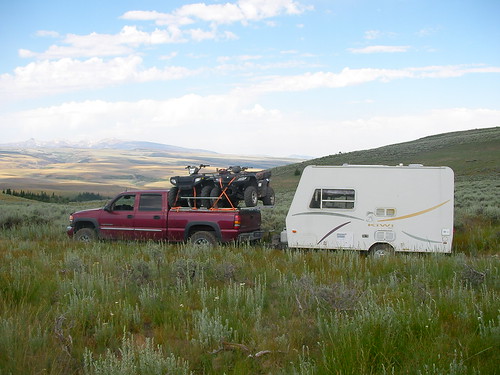In general, heavy duty trucks are designed to tow fairly large loads. Some of the mammoth-sized pickups on the market today can tow well over 10,000 pounds. But if you have an automatic transmission, you probably own one of the many models of trucks that come with tow/haul mode – that little button on the dashboard you’re supposed to push when you’re pulling cargo, boats, recreational vehicles, livestock, or whatever you happen to haul. The standard recommendation for how often you put the truck into tow/haul mode will vary depending on your make and model. Some owner’s manuals suggest pushing it every time you tow anything, but others will give you a rough idea of how heavy your load should be before you really need it. How true to reality are these recommendations? And what does tow/haul mode actually do? It’s simple.
1. The Function of Tow/Haul
Your tow/haul button actually changes the shift cycles of your transmission. It’s designed to make hauling a big cargo easier, but certain drivers get more comfortable with it than others. Just remember if you’re going to be traveling over hills or any kind of steep or uneven terrain, tow/haul lets your transmission shift a little sooner and compensate for the extra weight, preventing wear and tear on your engine. It also gives you extra brake time, which is great for winding roads and areas where you need to stop and start a lot. Tow/haul is similar to overdrive but is actually designed to provide the same power without needing to engage your overdrive, which can easily burn out when you’re carrying too heavy a load. It’s meant to increase RPM and reduce the chances of engine problems.
2. Towing in Different Locations
Whether or not you engage the tow/haul button almost always comes down to the weight of the cargo and the area where you’re driving. Rural and off road towing will be made much easier with tow/haul, and it’s also a good way to make towing in cities easier. When you’re more likely to run into traffic jams, lots of red lights, or residential streets and driveways, tow/haul will help you take your time and be able to stop when you need to. But if you’re cruising down the highway in an area that’s mostly flat, you might find that tow/haul isn’t necessary and can actually make your gas mileage worse. Towing always results in bad mileage, but for legs of the journey that aren’t particularly difficult, disengaging your tow/haul might make a lot more sense. Once you practice using it, you’ll get a feel for when it’s helping.
3. Things to Remember
Tow/haul should never be thought of as an all-inclusive fix for the possibility of damaging your truck by towing heavy loads. When your cargo weighs in at several thousand pounds, you need the right towing accessories, such as a timbren kit to reduce suspension sag and a sway bar to help keep weight evenly distributed. Towing damage is almost always caused by improper procedures on the part of the driver, and though your tow/haul button is great for your transmission, you should be using it in addition to the right equipment. Your heavy duty truck is a big investment and needs to be protected, which is why these features are available.
While you should always consult your owner’s manual before you begin using your truck for towing; there are many things you’ll only get the hang of after you practice. Tow/haul will keep your vehicle in good condition for a long time to come, but it’s no substitute for prioritizing towing safety. After all, you’re behind the wheel of a very powerful machine.
Author/Adventurist Dan Nielson installed timbren bump stops on his truck to help prevent bottoming out on the rough terrain of his favorite camping area.




